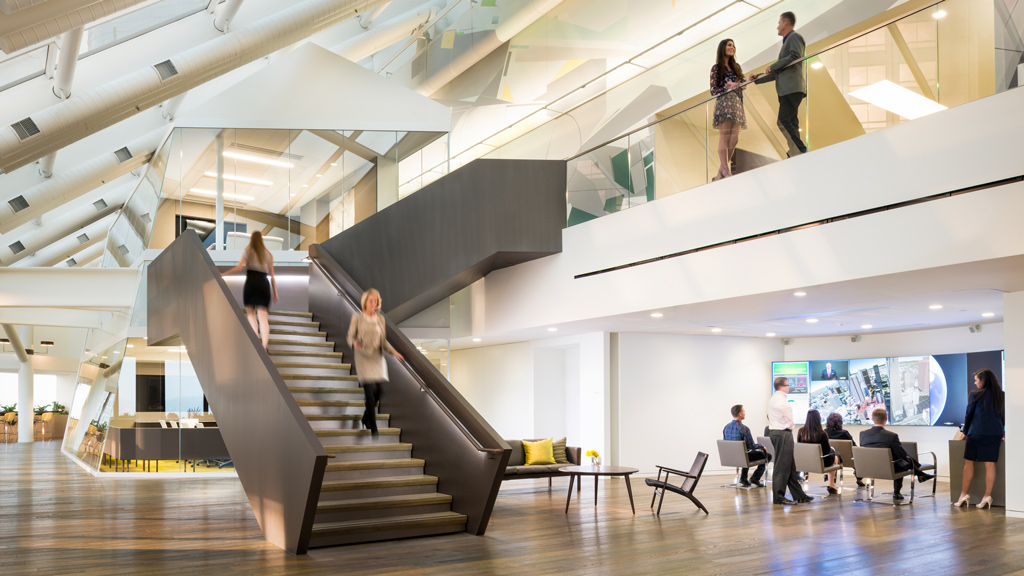Most People Want to Return to the Office — But They Expect Changes
May 22, 2020 | By Janet Pogue McLaurin
Editor’s Note: This post is part of our ongoing exploration of how design is responding to the COVID-19 pandemic.
There’s no place like work. Just before the pandemic hit, Gensler released the U.S. Workplace Survey 2020 research findings, the latest in our research series that measures how people work, as well as the effectiveness and experience of the workplace.
At the time that research was conducted, we asked a now-poignant question: where do people prefer to work? We gave respondents four choices: home, employer’s workplace, a coworking site, or a coffee shop. When their workplace was well-designed to meet their needs, U.S. knowledge workers overwhelming chose the workplace. The workplace mattered.
When we return to the office, it will be anything but a return to normal. While we’ve been working from home, we’ve changed how we work. We’ve built new skills in how to work virtually. We’ve developed new ways to connect with our colleagues, clients, friends, and extended families. We’ve learned that working from home has, in fact, been brutally efficient and productive for most, especially for those trying to work individually.
In Gensler’s new Work From Home (WFH) Survey — research of 2,300+ U.S. knowledge workers across 10 different industries — employees report gains in their ability to complete individual work and in personal creativity. Similarly, a recent McKinsey study finds 60% of businesses report that new remote sales models were proving as much or more effective than traditional channels. Businesses have implemented new platforms and technologies overnight and have worked faster and better than they ever imagined.
For most of my clients, working from home has not been a problem. On the contrary, it has been an accelerator in decision-making, innovation, and shared purpose. Our clients are hoping to foster these new behaviors as they begin to reimagine a new way of working. Their expectations are changing as they reimagine their businesses.
Working from home can be productive, but most people want to return to the workplace.Gensler’s WFH research found that working from home regularly was new to most employees. Only one in 10 U.S. workers regularly worked from home prior to the pandemic. Now that many people have had to work from home, most people look forward to coming back to the office.
According to our research, only 12% of people want to continue to work from home full-time after the pandemic subsides. Most want to go back to the office full-time, or are looking for a balance between the two. The amount varies by industry. On average, most employees want to work from home two-to-three days or less.
We’ve proven we can easily and efficiently work from home. Focus work requiring deep concentration is reported to be exceptionally effective at home, and virtual collaboration also saw an increase in effectiveness as compared to doing both activities in the office. Nevertheless, we can’t effectively do all work activities from home. The workplace not only still matters, it may be more important than ever.
The longer we work apart from colleagues, the more being together matters.While we can focus at home, we can’t easily socialize. Collaborating in person is off-limits. The pandemic has shown that we really miss people. We yearn for interaction and a shared work experience. We miss meetings with coworkers and clients. We miss socializing with our colleagues. We miss impromptu connections. And we miss the learning, coaching, and mentoring that comes naturally just by being together.
According to our survey, the most important reasons workers prefer to come to the office include meetings, socializing, connecting with colleagues, and building community. This underscores the fact that being with colleagues in person is an invaluable part of the workplace experience, as is being part of a community that can’t be replaced virtually while working from home.
This is not only changing expectations of how we work, but it’s changing the role of the physical workplace.The role of the post-COVID-19 workplace will shift away from a place where people simply go to work, and into a place where people want to be to meet, socialize, and work with each other. It will shift from a “work” place for individual work to a “convening” place for group work.
The new role of the workplace will be to build community, to reinforce culture and shared purpose and mission, and to strengthen relationships with each other. We might choose to split our work week: working independently at home for intense heads-down work and virtual collaboration meetings, and reserving other days to come together to be with our teams, colleagues, and clients in person.
The design of physical workspaces must change to support this new role with new space types that connect us with each other and support group work. This new design must reinforce the culture, mission, and purpose of organizations in visceral ways, giving each employee an understanding of how their work contributes to the whole when they are present and how it includes them even when they are working from home.
The new workplace must be worth the commute — a human-centric experience where employees feel safe, healthy, and empowered. It must be a place where design can nudge healthy behaviors and people can feel that their work, and their personal well-being, is valued. Just like well-placed stairwells can encourage people to take the stairs instead of elevators, steps such as removing excess seating, installing sanitizing or hand-washing stations, and placing 6-foot floor markers for social distancing can encourage new behaviors. This new workplace must provide a wide range of work settings to empower each person and help them bring their full selves to the workplace to do their mind’s best work. These can include private rooms for focus, huddle, or phone calls; semiprivate areas for individuals or small teams; whiteboarding or brainstorming areas; and individual settings.
COVID-19 has been a huge disruptor in every aspect of our lives. But the eternal optimist in me believes something better will emerge. Virtual platforms and tools have level-set the playing field and an empowered equity has emerged. The coronavirus has forced us to reexamine our priorities about what’s important and what really matters. It is allowing us reimagine a new workplace where people come together, reinforce culture, and strengthen relationships. I’m incredibly optimistic about this new workplace where people matter more than ever.
Check out the first of a series of Gensler’s WFH Survey Research Briefing and watch this space for additional insights.
For media inquiries, email .

